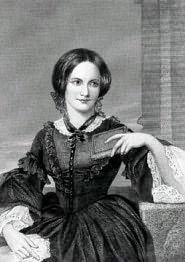A classic coming of age story, "Jane Eyre" is the tale of its title character, a poor orphaned girl who comes to live with her aunt at Gateshead Hall. While there she endures great emotional and physical abuse at the hands of her aunt and cousins. Jane subsequently ships off to Lowood, a Christian boarding school for poor and orphaned girls. The conditions at the school are quite brutal. The students are subjected to cold lodgings, poor food, inadequate clothing, and the harsh rule of the administrator, Mr. Brocklehurst. The maltreatment of the students is eventually discovered and after some changes life becomes more bearable. She eventually finishes her coursework and spends a period of time as a teacher at the school. After leaving Lowood she gains a position as a governess at Thornfield Hall working for Edward Rochester, a man whom she will eventually fall in love with. "Jane Eyre" is the story of one woman's struggle to overcome adversity. The novel was revolutionary in its day for its examination of the internal conflict of its protagonist and for the way in which it addressed the themes of class, sexuality, and religion in the mid 19th century. This edition is printed on premium acid-free paper and includes an introduction by Mary Augusta Ward.
Read More
Library Journal
Written in 1847, this novel remains a favorite, especially among younger readers and listeners who continue to be entranced by the young Jane and her mysterious Mr. Rochester. The story of an unhappy orphan and her life as a governess at Thornfield is filled with difficulty, including a shocking revelation on her wedding day. The happy ending finally arrives, though, and Jane and Rochester are united forever. Long criticized as being melodramatic and contrived, Jane Eyre has nonetheless become a romantic classic and is often the book that introduces students to serious literature. Bronte's suspense-filled plot adapts well to the audio format. This version, although abridged, omits nothing of importance. Juliet Stevenson, a Royal Shakespeare Company associate, reads with the drama the story demands and makes each character emerge with life and energy. Recommended for general audiences.
— Michael Neubert, Library of Congress, Washington, D.C.
— Michael Neubert, Library of Congress, Washington, D.C.
From the Publisher
Winner of the 2012 Fifty Books/Fifty Covers show, organized by Design Observer in association with AIGA and Designers & BooksWinner of the 2014 Type Directors Club Communication Design Award
Praise for Penguin Drop Caps:
"[Penguin Drop Caps] convey a sense of nostalgia for the tactility and aesthetic power of a physical book and for a centuries-old tradition of beautiful lettering."
—Fast Company
“Vibrant, minimalist new typographic covers…. Bonus points for the heartening gender balance of the initial selections.”
—Maria Popova, Brain Pickings
"The Penguin Drop Caps series is a great example of the power of design. Why buy these particular classics when there are less expensive, even free editions of Great Expectations? Because they’re beautiful objects. Paul Buckley and Jessica Hische’s fresh approach to the literary classics reduces the design down to typography and color. Each cover is foil-stamped with a cleverly illustrated letterform that reveals an element of the story. Jane Austen’s A (Pride and Prejudice) is formed by opulent peacock feathers and Charlotte Bronte’s B (Jane Eyre) is surrounded by flames. The complete set forms a rainbow spectrum prettier than anything else on your bookshelf."
—Rex Bonomelli, The New York Times
"Drool-inducing."
—Flavorwire
"Classic reads in stunning covers—your book club will be dying."
—Redbook
Read More








